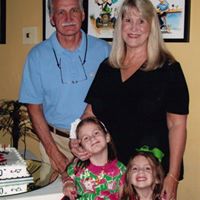James M Cavanaugh
age ~93
from Hingham, MA
- Also known as:
-
- James Tr Cavanaugh
- Jas M Cavanaugh
- Phone and address:
-
106 Lazell St, Hingham, MA 02043
7817492568
James Cavanaugh Phones & Addresses
- 106 Lazell St, Hingham, MA 02043 • 7817492568
- Topsfield, MA
- West Simsbury, CT
- Upper Saddle River, NJ
- 106 Lazell St, Hingham, MA 02043 • 6177492568
Work
-
Company:Analogic corporation2015
-
Position:Marketing operational excellence
Education
-
School / High School:University of Michigan- Ann Arbor, MI2006
-
Specialities:Strategic Marketing Management
Real Estate Brokers

James Cavanaugh, Morristown NJ Owner
view sourceWork:
Cavanaugh Inc.
93 Columbia Rd, Morristown, NJ 07960
9732703742 (Office)
93 Columbia Rd, Morristown, NJ 07960
9732703742 (Office)
Lawyers & Attorneys

James Cavanaugh - Lawyer
view sourceSpecialties:
Administration
Acquisitions
Corporate Governance
Legislation
Subrogation/Release of Information
Acquisitions
Corporate Governance
Legislation
Subrogation/Release of Information
ISLN:
908468698
Admitted:
1974
University:
University of Notre Dame, B.A., 1971
Law School:
Georgetown University, LL.M., 1977; University of St. Louis, J.D., 1974

James Cavanaugh - Lawyer
view sourceOffice:
Dzida, Carey & Steinman
Specialties:
Real Property and Land Use
ISLN:
908468704
Admitted:
1974
University:
University of Notre Dame, B.A., 1971
Law School:
University of Notre Dame, J.D., 1974

James Cavanaugh - Lawyer
view sourceOffice:
Gordon Rees Scully Mansukhani, LLP
Specialties:
Litigation
Construction
Construction
ISLN:
910013091
Admitted:
1993
University:
Goldem Gate University
Isbn (Books And Publications)

Name / Title
Company / Classification
Phones & Addresses
Vice-President
Phoenix Contractors Inc
Real Estate Development and Construction
Real Estate Development and Construction
25 Us Hwy 46, Fairfield, NJ 07004
9732441800
9732441800
Manager
HEALTHCARE MANAGEMENT VII LLC
47 Thorndike St Ste B1-1, Cambridge, MA 02141
44 Nassau St, Princeton, NJ 08542
44 Nassau St, Princeton, NJ 08542
Chairman
London Properties, Ltd.
2000 Purchase St, Purchase, NY 10570
5594364000
5594364000
VP Information Services, Chief Information Officer
St. Joseph's Healthcare System, Inc
General Hospital
General Hospital
703 Main St, Paterson, NJ 07503
9737544500
9737544500
Real property
HCV MANAGEMENT VIII LLC
47 Thorndike St Ste B1-1, Cambridge, MA 02141
47 Thorndike St, Cambridge, MA 02141
47 Thorndike St, Cambridge, MA 02141
Chief Executive Officer, CEO, Chief Operating Officer, President
Battery Park City Authority Inc
Subdivider/Developer · Legislative Bodies
Subdivider/Developer · Legislative Bodies
1 World Financial Ctr, New York, NY 10281
200 Liberty St, New York, NY 10281
2124172000, 6468568580, 2127860109, 2124165393
200 Liberty St, New York, NY 10281
2124172000, 6468568580, 2127860109, 2124165393
Vice President/chief Information Officer
St. Joseph''s Medical Center
800 Main St, Paterson, NJ 07503
9737544500
9737544500
CAVANAUGH ENTERPRIESE, LTD
Us Patents
-
Method And Apparatus For Delivery Of A Ligating Suture
view source -
US Patent:20090043317, Feb 12, 2009
-
Filed:Aug 7, 2008
-
Appl. No.:12/187486
-
Inventors:Brian J. Cavanaugh - Hingham MA, US
James J.A. Cavanaugh - Osterville MA, US -
International Classification:A61B 17/138
-
US Classification:606144, 600104
-
Abstract:An apparatus for ligating a medical protrusion comprises a ligating suture having a proximal end and a distal end configured to circumscribe the medical protrusion, and a one-way lock positioned there between. The apparatus further comprises an endoscope, a cutter blade configured to cut the suture, and a device for ligating a medical protrusion. The device comprises a tubular body having a proximal end and a distal end, a handle positioned at the proximal end, an endoscope controller operably connectable to the endoscope, a cutting controller operably connectable to the cutter blade, a suture controller configured to be operatively coupled with the suture, a curved bridge positioned at the distal end, the bridge having a proximal end and a distal end, and an armature, having a proximal end and a distal end, configured to releaseably retain at least a portion of the suture.
-
Method And Apparatus For Delivery Of A Ligating Suture
view source -
US Patent:20120226293, Sep 6, 2012
-
Filed:May 14, 2012
-
Appl. No.:13/471141
-
Inventors:Brian J. Cavanaugh - Hingham MA, US
James J.A. Cavanaugh - Osterville MA, US -
Assignee:Cavanaugh Medical Devices, LLC - Hyannis MA
-
International Classification:A61B 17/04
-
US Classification:606144
-
Abstract:An apparatus for ligating a medical protrusion comprises a ligating suture having a proximal end and a distal end configured to circumscribe the medical protrusion, and a one-way lock positioned there between. The apparatus further comprises an endoscope, a cutter blade configured to cut the suture, and a device for ligating a medical protrusion. The device comprises a tubular body having a proximal end and a distal end, a handle positioned at the proximal end, an endoscope controller operably connectable to the endoscope, a cutting controller operably connectable to the cutter blade, a suture controller configured to be operatively coupled with the suture, a curved bridge positioned at the distal end, the bridge having a proximal end and a distal end, and an armature, having a proximal end and a distal end, configured to releaseably retain at least a portion of the suture.
-
Multi-Panel Door System, And Dual-Synchronization Drive Assembly For A Multi-Panel Door System
view source -
US Patent:20230096802, Mar 30, 2023
-
Filed:Sep 26, 2022
-
Appl. No.:17/935404
-
Inventors:- Carmel IN, US
James Cavanaugh - Farmington CT, US
Ronald Laliberte - Farmington CT, US
Benjamin Marotte - Springfield MA, US
Gregory John Oleksik - Carmel IN, US -
International Classification:E05F 15/643
-
Abstract:A door system includes a multi-panel door and a dual-synchronization drive assembly for the door system. The dual-synchronization drive assembly has a structural configuration and functionality that combines a drive mechanism with a synchronization mechanism. The dual-synchronization drive assembly transmits a drive force in a manner that causes linear movement of door panels of the multi-panel door system between an open position and a closed position. The dual-synchronization drive assembly causes a synchronized movement of the door panels at different linear speeds/velocities to fully advance the door panels to the open position or the closed position simultaneously. The dual-synchronization drive assembly includes a dual gear unit that is configurable to allow for any motion/speed ratio necessary in order to obtain a specific performance objective of the door system.
-
Door System Having A Swing Interlock System
view source -
US Patent:20200011109, Jan 9, 2020
-
Filed:Dec 8, 2017
-
Appl. No.:16/468219
-
Inventors:- New Britain CT, US
Thomas M. KOWALCZYK - Unionville CT, US
Ronald LALIBERTE - Farmington CT, US
James CAVANAUGH - Farmington CT, US -
International Classification:E05D 15/58
E05D 15/06
E05B 65/08
E05C 1/12
E06B 3/50
E05C 19/16 -
Abstract:A door system includes a header having a guide rail that has a central portion having a notch. A panel hanger is slidably coupled to the header. A door panel has a handle end portion releasably coupled to the panel hanger and a pivot end portion pivotably coupled to the panel hanger. The panel hanger and the door panel slide in unison between a closed position and a fully open position along a longitudinal plane. An interlock plate is positioned to extend upwardly from the door panel, and has a downwardly extending guide slot that slidably receives the guide rail of the header. When the door panel is in the fully open position, the interlock plate is aligned with the notch of the guide rail of the header in a direction orthogonal to the longitudinal plane to facilitate a pivoting of the door panel away from the longitudinal plane.
-
Slide Latching System For A Door System
view source -
US Patent:20190309538, Oct 10, 2019
-
Filed:Dec 11, 2017
-
Appl. No.:16/468231
-
Inventors:- New Britain CT, US
Thomas M. KOWALCZYK - Unionville CT, US
Ronald LALIBERTE - Farmington CT, US
James CAVANAUGH - Farmington CT, US
Daniel R. SEYMOUR - New Britain CT, US -
International Classification:E05B 7/00
E05B 15/02 -
Abstract:A slide latching system for latching a sliding door panel to a door frame includes a jamb strike, a latch assembly, and a handle set. The jamb strike is connected to the door frame. The latch assembly is connected to the sliding door panel, and has a latch member having a latch hook portion configured to engage the jamb strike. The latch hook portion is movable between a latched position and an unlatched position. The handle set is mounted to the sliding door panel. The handle set is drivably coupled to the latch assembly. The handle set is configured to facilitate both of a moving of the latch hook portion of the latch assembly to the unlatched position and a sliding of the sliding door panel in a first direction in a continuous motion applied to the handle set by a user.
-
Retractable Latch Hook Shroud Assembly
view source -
US Patent:20180298656, Oct 18, 2018
-
Filed:Apr 16, 2018
-
Appl. No.:15/953848
-
Inventors:- New Britain CT, US
Vinay N. PATEL - Berlin CT, US
Seth STRAUSER - Farmington CT, US
James CAVANAUGH - Farmington CT, US -
International Classification:E05C 21/00
E05C 3/00
E06B 3/46 -
Abstract:A retractable latch hook shroud assembly includes a base plate, a first post, a second post, a shroud, and a spring biasing mechanism. The first post extends from the base plate in a first direction. The second post extends from the base plate in the first direction, and the second post is spaced away from the first post in a direction orthogonal to the first direction. A shroud has an end wall and a side wall that extends away from the end wall. The side wall defines a latch hook recess. The end wall has a first hole and a second hole. The first hole is configured to slidably receive the first post and the second hole is configured to slidably receive the second post. The spring biasing mechanism is interposed between the base plate and the end wall of the shroud.
License Records
James Cavanaugh
License #:
C003346 - Expired
Category:
Social Work
Issued Date:
Dec 28, 1998
Expiration Date:
Jun 30, 2000 - Expidre
Type:
Clinical Social Worker
James M Cavanaugh
Address:
Hingham, MA 02043
License #:
34813 - Active
Issued Date:
Aug 25, 1989
Expiration Date:
Jun 30, 2018
Type:
Civil Engineer
James P Cavanaugh
License #:
2325 - Expired
Category:
Asbestos
Issued Date:
Dec 12, 1989
Effective Date:
Dec 12, 1989
Expiration Date:
Sep 17, 1992
Type:
Asbestos Worker
Resumes

James Cavanaugh
view source
James Cavanaugh
view source
James Cavanaugh
view source
James Cavanaugh
view source
James Cavanaugh
view sourceSkills:
Microsoft Excel
Microsoft Word
Customer Service
Powerpoint
Microsoft Word
Customer Service
Powerpoint

James Cavanaugh
view source
James Cavanaugh
view sourceLocation:
United States
Medicine Doctors

James Cavanaugh
view sourceSpecialties:
Psychiatry
Forensic Psychiatry
Forensic Psychiatry
Education:
University of Pennsylvania(1967)

James J a Cavanaugh
view sourceSpecialties:
Pediatrics
Pediatric Allergy & Immunology
Allergy & Immunology
Allergy
Pediatric Allergy & Immunology
Allergy & Immunology
Allergy
Education:
Georgetown University (1955)
Classmates

James Cavanaugh
view sourceSchools:
McGill Institute Mobile AL 1963-1967
Community:
Joseph Ward, A Kenny, Karen Mcintyre

James Cavanaugh (James Ca...
view sourceSchools:
Velva High School Velva ND 1944-1948
Community:
Edith Nelson

James Cavanaugh
view sourceSchools:
Theodore Roosevelt School Ferndale MI 1989-1993
Community:
Christy Painter, Robin Winnie

James Cavanaugh
view sourceSchools:
Columbia High School Columbia MS 1971-1975
Community:
Shirley Jefferson, Steven Baughman

James Cavanaugh
view sourceSchools:
Camp Hill High School Camp Hill PA 1963-1967
Community:
Skee Derr, David Koester

James Cavanaugh
view sourceSchools:
Dr. William R. Peck Middle School Holyoke MA 1987-1989
Community:
Inez Griffith, Patricia Adams

James Cavanaugh (Candee)
view sourceSchools:
Searles Middle School Great Barrington MA 2002-2003
Community:
Leigh Hawkins, Linda Coleman

James Cavanaugh
view sourceSchools:
Monument Mountain Region High School Great Barrington MA 2000-2004
Community:
Leigh Hawkins, Linda Coleman

James Cavanaugh
view source
James Cavanaugh
view source
James Cavanaugh
view source
James Cavanaugh
view source
James E. Cavanaugh
view source
Cole James Cavanaugh
view source
James Cavanaugh
view source
James Cavanaugh
view sourceGoogleplus

James Cavanaugh
Lived:
Andover, MA
Work:
Health Care Company - Product Director
Education:
Bowdoin College

James Cavanaugh
Education:
Gordon College, Earlham School of Religion, ECU School of Social Work
Relationship:
Married
About:
60 y.o. male in NC since 70s. Born, raised in Mass. Married to Allie. Three children,Three grands.
Bragging Rights:
Two years ago: reversed diabetes by loosing 60 lbs and walking. This year: Spent 3 mos on the left coast being with family of origin.

James Cavanaugh
Education:
North Haven High School

James Cavanaugh
Work:
Tired and Retired

James Cavanaugh
Tagline:
Freelance Photographer

James Cavanaugh

James Cavanaugh

James Cavanaugh
Youtube
Myspace

James Cavanaugh
view sourceFlickr
Get Report for James M Cavanaugh from Hingham, MA, age ~93




















